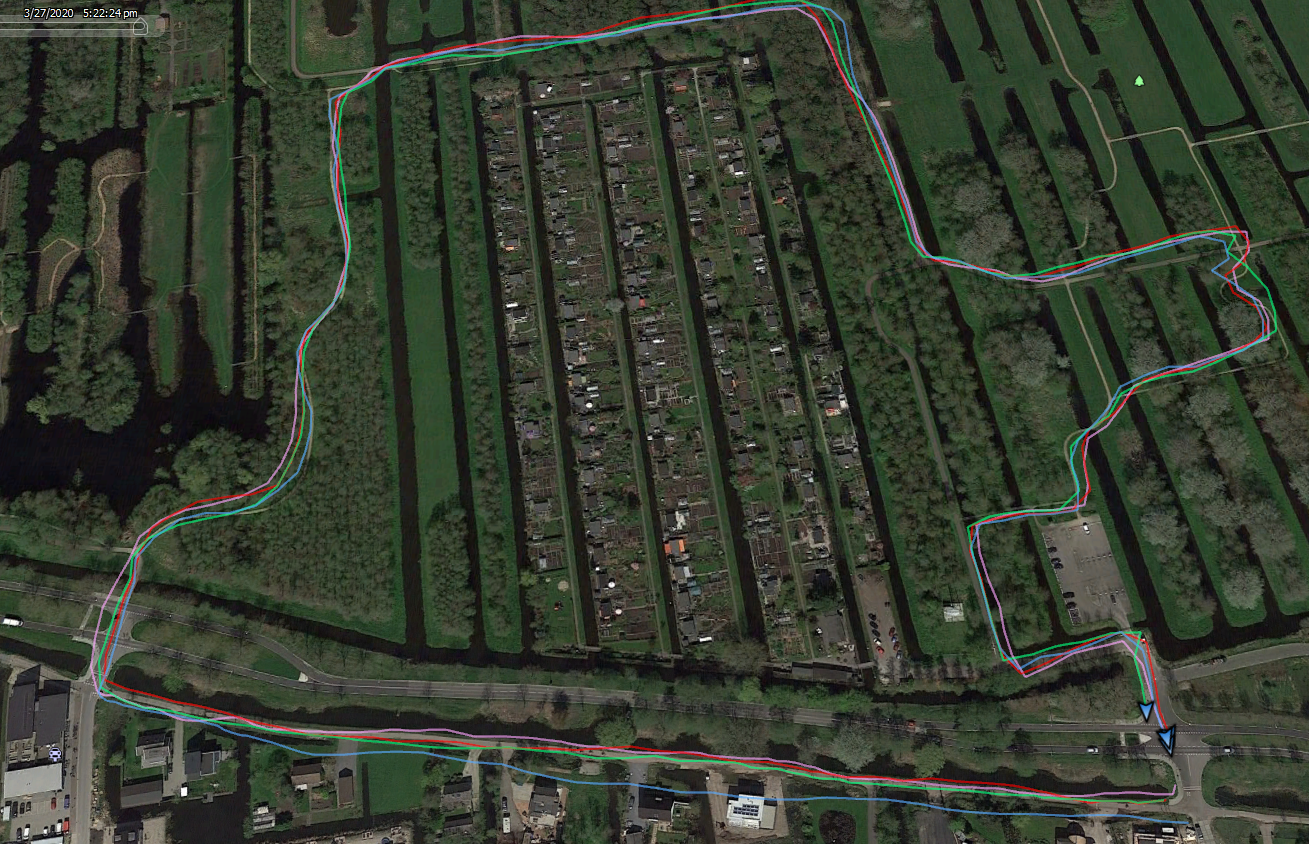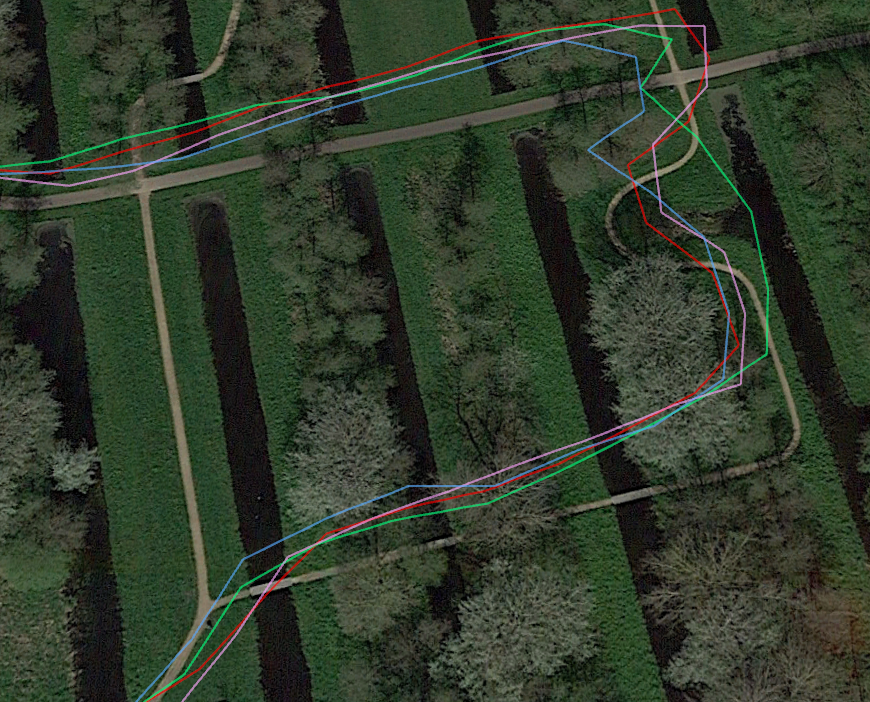Software update 2.11.38 for S5/S9
-
@clemens-renzl so should I understand that additional satellites interfere instead of help?
-
@Dimitrios-Kanellopoulos said in Software update 2.11.38 for S5/S9:
This release was for example targeted to be bigger, but things went out due to no space for testing
does that mean that there should soon be other new features when we do “normal” activities again (quickly I hope)?
-
@Rob33 If you are asking if there will be an extra release in the short term I think. no.
Now all is moved to next Q
-
@mountainChris I’d say:
If you’re going for a workout in difficult terrain, ie. urban canyon or dense forest / mountains - go with GNSS with most satellites available (atm. Beidou).
If you’re going for a workout in mostly open terrain and want best precision possible - go with Galileo.
If you’re going for a workout that requires best efficiency in regards to battery life - go with GPS only.
-
@Dimitrios-Kanellopoulos I completely agree.
 But… I know it has been a topic many times, but if a feature is tested well on the S9 for instance, and it doesn’t rely on any hardware feature that’s specific to the S9, it could be released for the Spartan line as well and all the ‘whining’ about forgotten Spartan lineup would stop
But… I know it has been a topic many times, but if a feature is tested well on the S9 for instance, and it doesn’t rely on any hardware feature that’s specific to the S9, it could be released for the Spartan line as well and all the ‘whining’ about forgotten Spartan lineup would stop 
-
@tomahawk5000 in this case yes
 , next time i will try “gps with galileo”
, next time i will try “gps with galileo” -
@Michał-Rudzki said in Software update 2.11.38 for S5/S9:
@TELE-HO I am using Spartan, Suunto many, many times fail me… also, in my opinion, they don’t have QA process at all. All tests are made by developers on desk nothing more. Why do I think that? it’s pretty simple when software getting so simple bugs it obvious that no one test that.
I am one of those field testers…I wear two watches every day and often 3. Sometimes we have specific areas to test. We do this because we want to help Suunto be the best and the testing requires a substantial amount of our “free” time. We do not get paid. I have used Suunto since 1998 and owned many watches. For me Suunto has been the most reliable and works. The hardware and software are carefully tested and iMHO a lot of thought goes into design of both. I have been through other software transitions with Suunto and was a beta user of MC. I owned and used an SSU, purchasing the watch when it was introduced.
I have 6600h and 43000 km mostly on Suunto watches. I have lost only two or three exercises in that time so Suunto watches rarely fail me.Not trying to attack you but your statements are factually incorrect and perhaps you might think of how they make others feel before writing them.
-
@Łukasz-Szmigiel I disagree as where I live BeiDou shows little to no improvement over GPS only. Gallileo does nothing for me except use more battery. I agree with @mountainChris, your location matters. I would not use as a general rule terrain to guide satellite choice. Try combinations where you normally exercise and you will find the best but…when you travel that might change.
-
@clemens-renzl I tried it twice already, and it was bad… next time I will return to GPS only, and after that probably try BeiDou one more time… It is very possible that is location based…
-
@isazi is for TP running pace mode running pod needed to have accurate pace or is gps good enough?
-
@dulko79 I used it with GPS for years.
-
Just tried BeiDou on morning run, track is better than same route on wednesday morning witg GPS only (before the update) but not significaly. The distance was also only 0.01km different. Can’t wait to try it on some trails
 I didn’t do anything special like waiting outside for couple of minutes, just laced my shoes outside insted inside, so maybe 30s. It got satelite fix quick.
I didn’t do anything special like waiting outside for couple of minutes, just laced my shoes outside insted inside, so maybe 30s. It got satelite fix quick.Also battery consuption stays the same - atleast on start of activity it showed me 30h.
-
@Dimitrios-Kanellopoulos I have a debate with users. Can you confirm that when using GPS + Beidou or GPS + Galiléo or + GPS + glonass for these 3 solutions,
the watch use the 2 systems simultaneously, for example [GPS + Beidou] to gain precision,
or choose the most efficient at a given time for example GPS or Beidou? -
@Rob33 From what I understand it does this:
2 Systems
System 1 GPS -> 10 satelites -> 4 have good signal / positioning
System 2 Beidou -> 10 satelites -> 5 have good signal / positioningThe watch will use 5+4 satelites (from both systems) to provide a location.
The watch doesn’t go SOLO on one one system and then on the other.
-
@Dimitrios-Kanellopoulos Thank you for the answer.
So we should indeed be more precise with 2 coupled systems. -
@Brad_Olwin that’s interesting. Are you usually happy with GPS only precision and hence don’t see any significant improvements over two systems? Did you also try checking signal availability with mobile phone for example?
-
@Dimitrios-Kanellopoulos do you know if watch requires a fix from each system independently? What happens if there are 6 GPS sats available but ie. Galileo drops to 2? Will watch ignore Galileo data in such circumstances?
-
Personal result after a few runs with GPS+Beidou:
No significant change. Track is sometimes good and sometimes worse. Like before with GPS only or GPS+Galileo.
Living in Northern Germany. -
My first test with the new firmware. I have to admit that I am not really impressed.
Blue: GPS
Green: GPS+GLONASS
Red: GPS+GALILEO
Purple: GPS+BEIDOU
Especially in tight corners it failed big time

-
Let me help.
Imagine
- Consider that all systems are fused into 1 and the chip selects the best satellites.
- Each system has a different language “quircks” etc. So each system needs special treatment.
- As said in one, after this treatment all are treated as the same. You can have GPS+BEIDOU and actually never connect to BEIDOU (or in a few cases) if their signal is not ok.
Where things get more haywire is when signal starts to drop.
As explained in 1, the watch will try to get the best SNR etc. Will that be Gali, Glo, GPS etc? It depends to the SNR etc they report.
I tried to make this simple and perhaps I have done some mistake or omitted something so please if anyone sees something wrong correct me.
